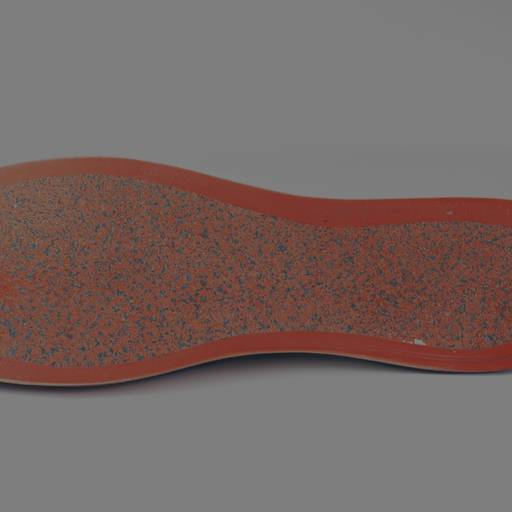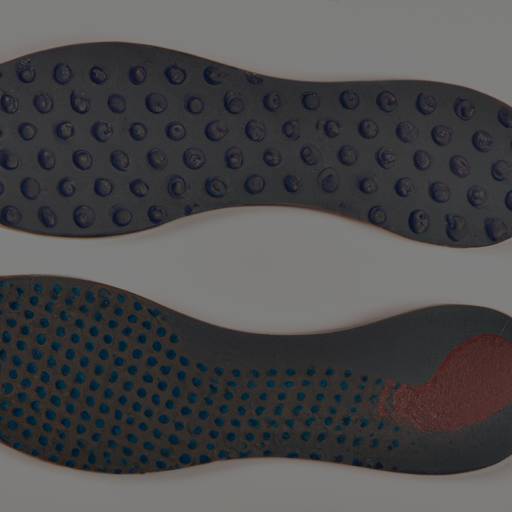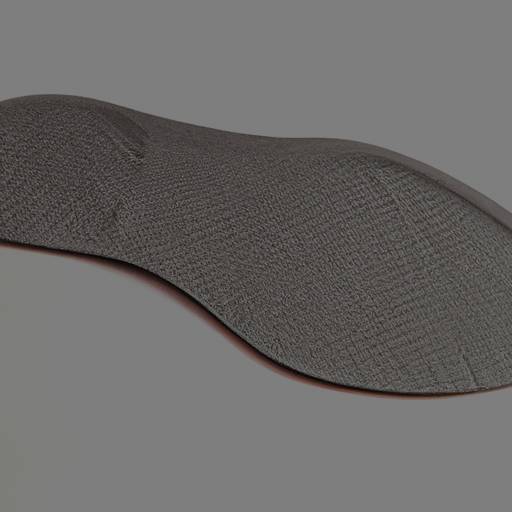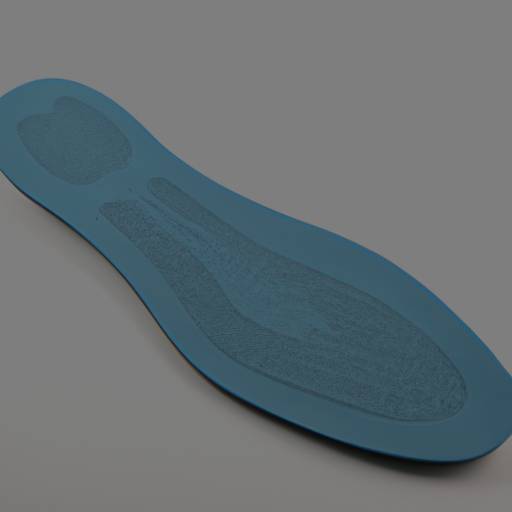Why Some People Experience Knee Pain after Wearing Orthotics
Understanding Orthotics and Knee Pain
Orthotics are specialized inserts that are designed to provide support, stability, and alignment to the feet. They can be particularly beneficial for individuals with foot conditions, such as flat feet or high arches. While orthotics can provide relief for many individuals, some people may experience knee pain after wearing them. Understanding the relationship between orthotics and knee pain is essential to address this issue effectively.
What are Orthotics?
Orthotics, also known as insoles or shoe inserts, are devices that are placed inside shoes to provide additional support and alignment for the feet. They are often made from materials such as foam, gel, or rigid plastics. Orthotics are designed to help distribute pressure evenly across the feet, correct foot imbalances, and improve overall foot function.
Orthotics can be purchased over-the-counter or custom-made to fit an individual’s specific foot shape and needs. Custom orthotics are typically recommended by a podiatrist after a thorough evaluation of the feet, gait, and any existing foot conditions. On the other hand, over-the-counter orthotics are readily available and can provide a more affordable option for those with mild foot issues.
The Relationship Between Orthotics and Knee Pain
While orthotics are primarily intended to support the feet, they can have a significant impact on the alignment and function of the entire lower body, including the knees. When properly aligned, orthotics can help reduce excessive stress and pressure on the knees, potentially alleviating knee pain.
However, in some cases, knee pain may occur or worsen after wearing orthotics. Several factors can contribute to this:
- Incorrect Alignment: If the orthotics are not properly aligned or positioned in the shoes, it can lead to an altered gait pattern, which may place additional stress on the knees.
- Inadequate Arch Support: Orthotics that do not provide sufficient arch support may not effectively distribute pressure away from the knees, leading to discomfort or pain.
- Improper Fit or Size: Ill-fitting orthotics can cause discomfort and affect the natural movement of the feet, potentially leading to knee pain.
To address knee pain associated with orthotics, it is important to seek professional guidance. A consultation with a podiatrist can help determine the underlying cause of the pain and provide appropriate solutions. They can assess the alignment of the orthotics, recommend adjustments or modifications, and guide you in choosing between custom orthotics and over-the-counter options.
In addition to professional advice, there are several steps you can take to help prevent knee pain while wearing orthotics. These include selecting proper footwear that accommodates the orthotics, regularly stretching and strengthening the lower body muscles, and closely monitoring and adjusting the orthotics as needed. By taking proactive measures, you can optimize the benefits of orthotics and minimize the risk of knee discomfort or pain.
Potential Reasons for Knee Pain
For some individuals, wearing orthotics may lead to knee pain. Understanding the potential reasons behind this discomfort can help address the issue effectively. Here are three common factors that may contribute to knee pain when wearing orthotics: incorrect alignment, inadequate arch support, and improper fit or size.
Incorrect Alignment
One possible reason for knee pain is incorrect alignment caused by the use of orthotics. Orthotics are designed to provide proper alignment and support to the feet, but if they are not aligned correctly with the foot structure, it can create misalignment issues that impact the knees. This misalignment can cause stress and strain on the knee joints, leading to pain and discomfort.
To address this issue, consulting with a podiatrist or a foot specialist is recommended. They can evaluate your feet and gait pattern to determine if the orthotics need adjustment or if different orthotic options would be more suitable. Proper alignment is crucial for ensuring that orthotics effectively support the feet and prevent knee pain.
Inadequate Arch Support
Another potential cause of knee pain is inadequate arch support provided by the orthotics. Arch support is essential in maintaining the natural alignment of the feet, which in turn affects the alignment of the knees. Insufficient arch support can result in excessive pronation (inward rolling) or supination (outward rolling) of the feet, leading to improper knee alignment and increased stress on the knee joints.
When selecting orthotics, it’s important to consider the level of arch support they provide. Arch support insoles, such as those made with memory foam, can offer a comfortable and supportive solution for individuals with different arch types. Evaluating the arch support provided by the orthotics and ensuring it meets your specific needs can help alleviate knee pain.
Improper Fit or Size
Wearing orthotics that do not fit properly or are of the wrong size can also contribute to knee pain. Ill-fitting orthotics can create discomfort and alter the natural alignment of the feet, affecting the knees as well. Orthotics that are too tight or too loose may cause pressure points, chafing, or instability, leading to knee pain and potential injury.
To avoid this issue, it is crucial to ensure that the orthotics fit properly. This can involve choosing the right size based on shoe size and considering the specific design features that accommodate the shape of your feet. Working with a podiatrist or a knowledgeable shoe professional can help in determining the correct fit and size of orthotics for your feet, reducing the risk of knee pain.
Understanding these potential reasons for knee pain when wearing orthotics can empower you to make informed decisions and seek appropriate solutions. By addressing issues related to alignment, arch support, and fit, you can optimize the benefits of orthotics while minimizing discomfort and knee pain. Remember, seeking professional guidance from a podiatrist is recommended for a comprehensive evaluation and personalized recommendations.
Adjustments and Solutions
Experiencing knee pain after wearing orthotics can be frustrating, but there are several adjustments and solutions that can help alleviate the discomfort. It’s important to address the issue promptly to ensure proper support and minimize any potential long-term effects on your knees.
Consultation with a Podiatrist
If you’re experiencing knee pain after wearing orthotics, it’s advisable to schedule a consultation with a podiatrist. A podiatrist specializes in foot and ankle health and can assess the fit and alignment of your orthotics. They will examine your gait, foot structure, and the way your orthotics interact with your feet. Based on their evaluation, they can recommend adjustments or alternative options to address your knee pain.
Custom Orthotics vs. Over-the-Counter Orthotics
When it comes to orthotics, there are two main options: custom orthotics and over-the-counter orthotics. Custom orthotics are individually designed to address your specific foot and biomechanical needs. They offer a higher level of customization, ensuring proper alignment and support. On the other hand, over-the-counter orthotics are pre-made and come in various sizes and arch support options. While they may provide general support, they may not address your specific knee pain concerns.
During your consultation with a podiatrist, they can help determine whether custom orthotics or over-the-counter orthotics are the best option for you. They will consider factors such as the severity of your knee pain, foot structure, and any existing biomechanical issues.
Gradual Break-in Period
It’s important to remember that orthotics may require a gradual break-in period. Your feet and knees need time to adjust to the new support and alignment provided by the orthotics. Initially, you may experience some discomfort or knee pain as your body adapts to the changes.
To facilitate a smoother transition, it’s recommended to gradually increase the amount of time you wear your orthotics each day. Start with shorter intervals and gradually increase the duration. This allows your feet and knees to gradually get used to the new support without overwhelming them. If you experience persistent knee pain even after the break-in period, consult with a podiatrist to ensure that the orthotics are properly fitted and aligned.
By seeking professional guidance, considering custom orthotics if necessary, and allowing for a gradual break-in period, you can address knee pain associated with wearing orthotics. Remember to be patient and communicate any concerns or persistent pain with your podiatrist to ensure the best possible outcome for your foot health.
Tips for Preventing Knee Pain with Orthotics
When wearing orthotics, it’s essential to take certain precautions to prevent knee pain. Here are some helpful tips to keep in mind:
Proper Footwear Selection
Choosing the right footwear is crucial when using orthotics. Opt for shoes that provide ample support and stability. Look for styles with a wide toe box and proper arch support to complement the function of your orthotics. Avoid shoes that are too tight or narrow, as they can restrict movement and cause discomfort.
It’s also important to ensure that your shoes have enough room to accommodate the added bulk of the orthotics. The insoles should fit comfortably within the shoe without causing any pressure points or rubbing. For more information on selecting the best shoes for orthotics, check out our article on what shoe brands do podiatrists recommend.
Regular Stretching and Strengthening Exercises
Performing regular stretching and strengthening exercises can help improve the overall strength and flexibility of your muscles, reducing the strain on your knees. Focus on exercises that target the quadriceps, hamstrings, and calf muscles. These exercises can help maintain proper alignment and stability, alleviating stress on the knee joints.
Incorporate exercises such as leg extensions, lunges, squats, and calf raises into your routine. Remember to start slowly and gradually increase the intensity of your workouts over time. If you’re unsure about which exercises are suitable for your specific needs, consult with a healthcare professional or physical therapist.
Monitoring and Adjusting Orthotics as Needed
Regularly monitor the performance of your orthotics and make adjustments as necessary. Over time, your feet and gait may change, requiring modifications to your orthotics. If you experience any discomfort or notice changes in your gait pattern or knee pain, consult with a podiatrist or healthcare professional.
They can evaluate the fit and alignment of your orthotics and make any necessary adjustments to ensure optimal comfort and support. Avoid making adjustments yourself without professional guidance, as improper modifications may lead to further issues.
By following these tips, you can minimize the risk of knee pain associated with wearing orthotics. Remember to choose appropriate footwear, engage in regular stretching and strengthening exercises, and seek professional assistance for any concerns or adjustments needed. Taking these proactive steps will help you enjoy the benefits of orthotics while keeping your knees comfortable and pain-free.
When to Seek Professional Help
While some discomfort or adjustment period is normal when wearing orthotics, there are instances where persistent or severe knee pain may indicate the need for professional assistance. It’s important to listen to your body and seek expert evaluation and treatment if necessary. Here are some situations where professional help should be considered:
Persistent or Severe Knee Pain
If you experience ongoing knee pain even after a reasonable break-in period, it may be a sign that something is not quite right. Orthotics are designed to provide support and alleviate discomfort, but if you find that your knee pain persists or worsens, it’s important to consult with a podiatrist or healthcare professional. They can assess your specific situation, evaluate the fit and alignment of your orthotics, and recommend adjustments or alternative solutions as needed.
Other Symptoms or Complications
In addition to knee pain, if you notice any other symptoms or complications such as ankle pain, foot numbness, or calf pain, it’s advisable to seek professional help. These symptoms may indicate that the orthotics are not properly aligned or that they are causing unintended issues. A podiatrist or healthcare professional can conduct a thorough examination, identify any underlying issues, and provide appropriate guidance and treatment options.
Expert Evaluation and Treatment
If you find that your knee pain persists and is affecting your daily activities, it’s essential to seek expert evaluation and treatment. A podiatrist or healthcare professional specializing in foot and ankle conditions can assess your orthotics, evaluate your gait and biomechanics, and provide personalized recommendations. They may suggest custom orthotics tailored to your specific needs or offer alternative solutions to address your knee pain effectively.
Remember, everyone’s feet and biomechanics are unique, and what works for one person may not work for another. Seeking professional help ensures that you receive an accurate diagnosis and appropriate treatment for your specific condition. Don’t hesitate to reach out to a podiatrist or healthcare professional if you are experiencing persistent or severe knee pain or any other concerns related to your orthotics.
For more information on insoles and orthotics, including tips on selecting the right ones for your needs, check out our article on how to pick insoles.




